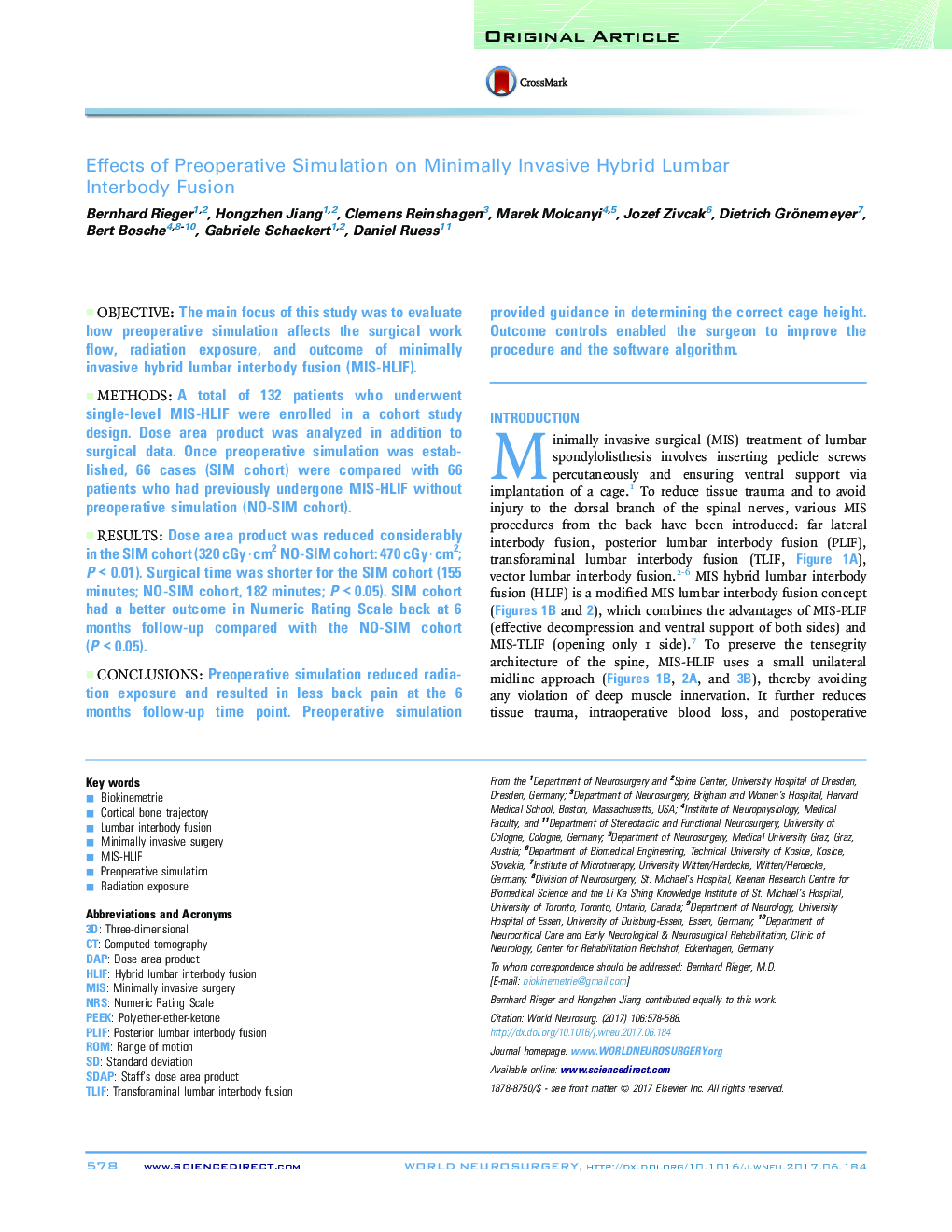| Article ID | Journal | Published Year | Pages | File Type |
|---|---|---|---|---|
| 5634019 | World Neurosurgery | 2017 | 11 Pages |
ObjectiveThe main focus of this study was to evaluate how preoperative simulation affects the surgical work flow, radiation exposure, and outcome of minimally invasive hybrid lumbar interbody fusion (MIS-HLIF).MethodsA total of 132 patients who underwent single-level MIS-HLIF were enrolled in a cohort study design. Dose area product was analyzed in addition to surgical data. Once preoperative simulation was established, 66 cases (SIM cohort) were compared with 66 patients who had previously undergone MIS-HLIF without preoperative simulation (NO-SIM cohort).ResultsDose area product was reduced considerably in the SIM cohort (320 cGy·cm2 NO-SIM cohort: 470 cGy·cm2; P < 0.01). Surgical time was shorter for the SIM cohort (155 minutes; NO-SIM cohort, 182 minutes; P < 0.05). SIM cohort had a better outcome in Numeric Rating Scale back at 6 months follow-up compared with the NO-SIM cohort (P < 0.05).ConclusionsPreoperative simulation reduced radiation exposure and resulted in less back pain at the 6 months follow-up time point. Preoperative simulation provided guidance in determining the correct cage height. Outcome controls enabled the surgeon to improve the procedure and the software algorithm.
